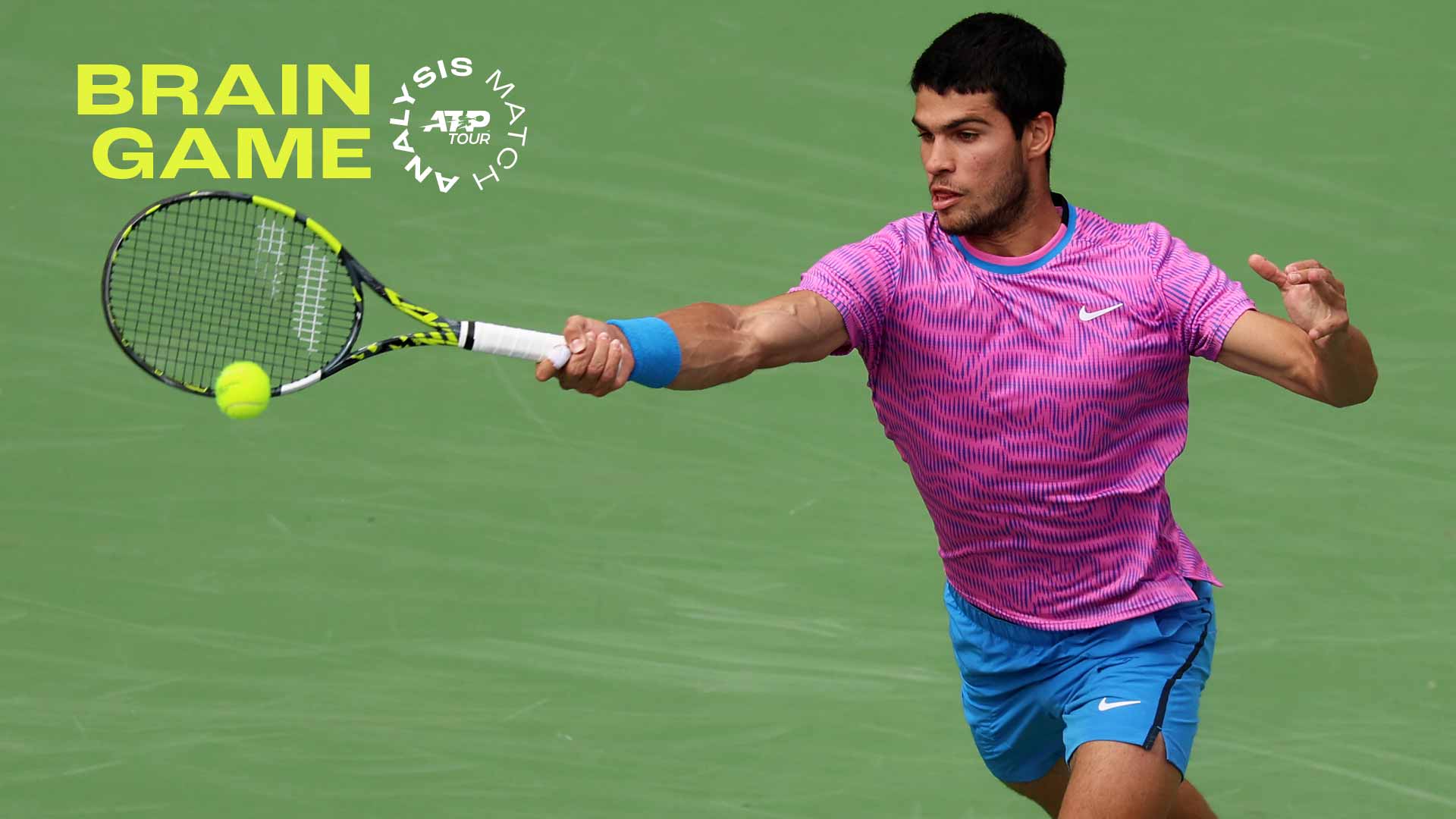

Forehands > backhands.
Carlos Alcaraz defeated Daniil Medvedev 7-6(5), 6-1 in the final of the BNP Paribas Open Sunday on the back of playing with his bigger baseline weapon more often throughout the one-hour, 42-minute final. Alcaraz won an extremely healthy 54 per cent (41/76) of his baseline points, while Medvedev only managed to win 38 per cent (27/71) from the back of the court. The shots they were hitting from the back told the real story.
Alcaraz Groundstrokes
Medvedev Groundstrokes
The best way to think about the relationship between forehands and backhands is a sword and a shield. The forehand is the sword, born and bred to be an attacking weapon. The backhand is the shield and is meant to keep you alive in the point much more than hitting winners. Forehands typically account for around 70 per cent of winners from the back of the court, with backhands making up just 30 per cent.
Alcaraz hit 57 per cent of his groundstrokes as a forehand, while Medvedev only hit 48 per cent. This directly impacted the high number of baseline points Alcaraz won and the lower total Medvedev could possibly accumulate. This was always going to be a baseline brawl, and Alcaraz gained control by upgrading more often to his superior forehand weapon.
Watch extended highlights:
Medvedev has one of the best backhands on the planet, but it still can’t compete with a lethal forehand such as Alcaraz’s. Medvedev surged to a 3-0 lead in the opening set mainly because he could make in-roads into Alcaraz’s backhand. Alcaraz committed seven backhand errors in the opening three games while not hitting a winner. On the forehand side, he had one forehand winner, committed three errors and forced two forehand errors from Medvedev.
Alcaraz controlled the flow of shots from the back of the court throughout the match by upgrading to run-around forehands in the Ad court instead of hitting backhands. Alcaraz hit 22 run-around forehands, immediately extracting four errors from Medvedev while yielding only two errors.
What’s that? Oh, just the WINNING FEELING 🌟 🏆
— ATP Tour (@atptour) March 18, 2024
Lifting that trophy yet again, congratulations @carlosalcaraz 💫
@bnpparibasopen | #TennisParadise pic.twitter.com/eopyrxAv0A
The set point in the opening set was a prime example of how Alcaraz’s forehand ruled the roost, especially on big points. Medvedev served at 5/6 in the tie-break, and Alcaraz hit a forehand return and a forehand groundstroke on five of the next six shots. Alcaraz cleverly controlled the point through the Deuce court with his forehand against Medvedev’s forehand. The Spaniard sometimes ripped the ball hard and also took pace off and looped the ball high to deny Medvedev rhythm in the point.
The point ended when Medvedev tapped out of the extended crosscourt exchange and took a forehand down the line to desperately find Alcaraz’s backhand. His shot landed in the alley and Alcaraz won a hard-fought set. The match essentially ended with that forehand error.
Alcaraz hit 30 forehands in the second set, striking three winners, committing just two errors, but most importantly, extracting five errors from Medvedev. It is telling that four of the five errors Alcaraz forced were forehands from Medvedev.
It’s tough to win a match of this magnitude when your opponent’s sword is sharper than your own.